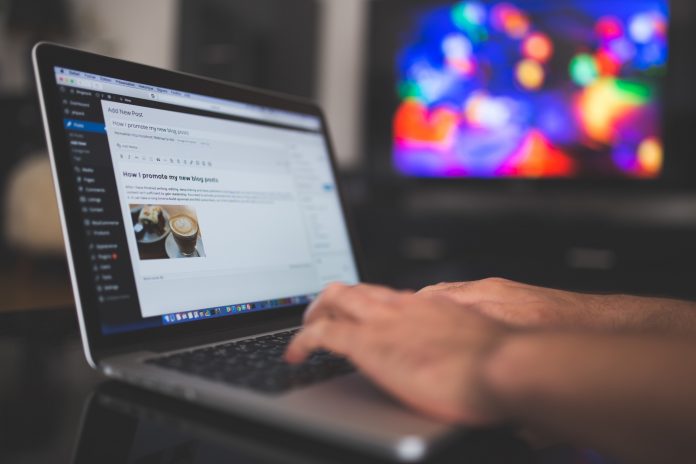This article is written by Akella Poornima, a 2nd-year law student of LL.B 3 yrs, Symbiosis Law School, Pune. This article talks about copyright policies, the rights of bloggers, and infringements related to blogs.
Table of Contents
Introduction
With globalization in India and abroad, the IT sector has boomed into new advancements, where technology has given employment to people from different fields. With such rampant growth, the bloggers around the world have got a massive audience to their content and worldwide recognition for their creativity and uniqueness. Today, blogs of different types – ranging from food, travel, lifestyle, philosophy, ideas, science, counselling and whatnot – are prevailing in the society at various social networking platforms as well.
For every such blogger, these blogs are self-made creative works that they produce after a lot of research and labour. It is because of their sheer talent that they are able to produce a new vision, or give an insight upon previously produced work. Hence, it is important that every such piece of information is protected under the law with recognition and sole rights given to its creator.
Scope
Copyright laws are a matter of concern when blogs are to be protected. These blogs come under intellectual property (IP). It protects blog posts as well as contents in eBooks, music, videos, software, podcasts, photos, etc and provides recognition of its creator upon it. In short, the copyright laws aim to protect every original work of its author including literature, drama, pantomimes and choreographic works, pictorial, graphic, and sculptural works, audio-visual works, sound recordings, derivative works, compilations, and architectural works.
The only limitation is that its scope does not include ideas, which means that for original work to be copyrighted, it needs to be in its final form. No intermediaries can be copyrighted. Also, no idea can be copyrighted but the way of expressing those ideas can be copyrighted.
Registering for copyright
For bloggers, copyright protection is received automatically once the work is produced online in its final form and bloggers hit the “publish” button. Also, in such cases to recognize ownership, one doesn’t even need to have a little circled – C symbol i.e, (©).
Otherwise, registration can also be done manually but sometimes this becomes a tedious process.
Although this facility of registration comes automatically to bloggers once they put their hard work online, it still doesn’t appear to be enough to prove ownership in case of infringements. In short, to have complete protection i.e., to have the right to sue anyone for copyright infringement, it is mandated that the work produced is officially registered.
Also, it is possible that the blogger, if he wishes to, can copyright his entire blog provided that he is able to protect the content of the posts that are published through the registration date. For the posts uploaded after the registration dates, additional registrations are required.
To avoid such discrepancies, one can periodically send in registrations for an entire blog i.e., monthly or yearly. On the other hand, one can register the most important posts and content as soon as one creates it.
Apart from these, several websites have a policy wherein the website itself gets copyright over the content that is displayed there and in such cases, the writers of these blogs or contents get acknowledgement for the work done.
Further, for manually registering copyright in India, the applicant has to follow the following steps:
- An application has to be made to the Copyright Office either in person or through post. E-filing facility is provided as well but to file an application online, it is required to produce the required documents as per the category the work belongs to. The checklist for the same is available at the website of the Copyright Office, Government of India.
- The prescribed fees have to be paid for the application. The applicant himself or the person who is granted the Power of Attorney can file the application.
- A Dairy Number is issued to the person whose application is successfully filed.
- After this, call on objections will be there, for which there is a wait for 30 days and applications are put at a stay. If objections are raised during that period, a notice is issued to both parties and an opportunity is provided of being heard by the Registrar who will decide the matter.
- Once the matter is cleared there will be scrutiny by the examiner who, if in the case finds any discrepancies again, will refer it to the Registrar who would further hear the matter. In case of no discrepancies, the registration will be approved by the Deputy Registrar and extracts from the Register are sent to the applicant resulting in successful registration of the Copyright.
“Fair Use” of the content
Fair use in the general sense means to use someone else’s content for criticizing, commenting upon, reporting, learning, researching, etc on a copyrighted work while making one’s own content. In general terms, it is a kind of defence against copyright infringement. But, such “fair use” of content must undergo the following four factors:-
- The intention behind using the content — Content must be used with commercial or nonprofit intention and must be adding something new to the original IP.
- The nature of the content — Using copyrighted content more than often can violate the rights of the originator.
- The amount or quantity of content that is used — Using large quantities of someone else’s work within one’s own content can impact fair use more than small amounts.
- The value of the original work not to be manipulated while using old content — If the use of an old work does not add anything new (as contribution) to the original work, it is said to have breached the fair use of content. The previously acquired work can only be used to add value to the original work and cannot be used as a concrete substituted content.
It is also important to notice that the ‘fair usage of content’ and its standard principles are also applied to our own content which others may use to criticize, comment, or report on.
Copyrighting work under a Pseudonymous identity
Original works produced under pseudonymous identity can be protected but the length of the time the copyright remains in effect is relatively shorter than it would under a real name.
Section 54(b) of the Copyright Act, 1954 provides that the pseudonymous bloggers must remain in the default position until the true identity of the author is disclosed or the identity is presumed to be in the satisfaction of the Copyright Board.
When such anonymous identities wish to register their content, the format for the application is contained in Form XIV accompanying the Copyright Rules, 2013.
Details such as “Statement of Particulars” with separate columns for the names of the author, copyright owner, and publisher is required for filing of an application.
For anonymous bloggers, the name of the author is usually the pseudonym that is used in connection with the work, and the name of the copyright owner is the real name of the author of the work produced. It is important to note that when such declarations upon the original creator’s name is not mentioned, the copyright protection goes to the publisher of that work.
Apart from the benefits of having copyright under an anonymous identity, there also comes some limitations. Section 23 of the Copyright Act, 1957 states that anonymously or pseudonymously published work, when the real name of the author is not disclosed, in such a case the copyright subsists for 60 years from the year after the work is published.
However, if the real name of the author is disclosed within this period, the copyright in such a case continues to subsist for 60 years from the year after the death of the author. This provision includes an explanation stating the identity of an author to be true and authentic if it has been disclosed when any act of disclosing is done publicly by both the author and the publisher or otherwise when disclosure is done in such a way as to satisfy the Appellate Board.
Protecting IP without registering
Apart from blogs being protected, IP’s can also be protected. There are multiple ways.
- Firstly, protection can be done by including the copyright symbol (©) on each page of the site with the creator’s name and date.
- Secondly, creating a special page mentioning the terms, conditions, and policies regarding reposting content can prove helpful.
- Thirdly, signing up for a Creative Commons license would help to tame, manipulate and be creative with the content within the limit copyright policies.
- Fourthly, Configure your RSS feed so that it only shows summaries of the posts.
- Using Google alerts, searches, or plagiarism sites notifying plagiarized content is important too.
- Adding watermarks to the visual content indicating the creator’s name and website.
If the blogs are discovered with stolen IP’s, then one can issue a DMCA takedown notice.
DMCA Protection
The Digital Millennium Copyright Act (DMCA) protects creative works on the internet for rights management in digital works. It covers all kinds of artistic works such as articles, videos, and photographs. It aims to protect both copyright owners as well as internet service providers.
It has a protection badge (an icon) on the websites of the bloggers indicating the content has an ownership statement certificate. Further, it is helpful in finding out whether the website is verified, unverified or authorized. Also, taking DMCA protection badges assures the readers that the copyright infringements will be strictly taken care of.
The DMCA.com Badge has specific terms of use and should only be linked to the Website Protection Certificate. Cases where the Protection Badge is being used for alternate purposes and not linked to a protection status on the web page or when such protection badge is located on websites which use stolen content must be reported immediately.
What is a DMCA Takedown Notice?
The “DMCA takedown notice” functions to notify all the stolen contents in the websites to legally take it down from such platforms. The main objective behind DMCA is to fight plagiarism.
How to takedown plagiarised content?
Google DMCA is an easily accessible option for any blogger whose blog has been stolen. Otherwise, if the stolen content is put on some particular websites or appropriate platforms, the original creator of the blog needs to file a DMCA complaint against those specific sites.
Google removes the copied or plagiarised content easily when the original blogger reports about it on the blogger platform. Google platform has unrestricted access to all the contents put in there.
But when the report for plagiarism needs to be noticed for another platform like WordPress, the blogger will have to file for the URL to be removed from Google Search.
These takedown notices also work for copied blogs on the blogger/BlogSpot platform. Here is a way how to go about it. In this way one can remove the copied content from the Google search permanently.
- Click on the “Google DMCA legal” page.
- Log in through your Gmail account before proceeding.
- Find the “Legal Removal Request” page on it and click on “Submit a Legal Request”. Then go to “Tool”.
- Report the file there and click on any of the listed options provided there.
- Further, go to the “Blogger/Blogspot” button. Scroll down to “what can we help you with” and then click on “I have a legal issue that is not mentioned above” followed by “I have found content that may violate my copyright”.
- In the “Are you the copyright owner or authorized to act on his/her behalf?” option, Click on “Yes, I am the copyright owner or I am authorized to act on the copyright owner’s behalf”.
- In “What is the allegedly infringing work in question?”, further click “other” and the blogger will get an instruction further.
- Now one has to read the instructions and click the last link to fill out the DMCA complaint form.
- Fill and submit the form. The links that are copied from you will be removed from the blog and from Google search engine within 2 days.
In this way, one can also increase the traffic of original content.
Responding to a takedown DMCA complaint
There are some rare cases where Bloggers get “takedown DMCA complaints” upon their own content which is originally created by them only. There are cases where a person receives a complaint where all the affected URL’s are originally made by the blogger. This remedy allows them to submit a DMCA counter-notification form.
It is important to note that one cannot exhaust this remedy if one has used any other content which is not owned like images, text, video, JavaScript and any other forms of content. Doing so can lead to the deletion of one’s own blog also.
In such a case, follow the steps provided below and re-install the content.
- Login in blogger account to find a notification to remove the content, and then click on the “Here” link.
- Check for another page there – “Removing Content From Google”.
- Tick radio button on Blogger/BlogSpot.
- Now select Radio Button “I would like to file a counter-notice to reinstate content that was removed due to an alleged copyright violation.”
- Read instruction, If you agree then click on “yes” button.
- Click on “This Form” Link.
- One will find another page for DMCA counter-notification form. Fill up Complainant’s Information.
- Now enter all the links whose content is completely copyrighted by you in the field of Material In Question, and also fill up Clarification details about that article content.
- Select the Date, Read the Instructions provided, and when you agree with all the terms and conditions, click on Submit Button that set.
Civil remedies for copyright infringements
In certain cases the copyright lies with publishers as well as the original content creators. These rights include publishing, performing and producing the work in a material form, making copies of the work, distributing and displaying the work in a commercial setting and seeking remedies for unauthorized use of the copyrighted work.
These remedies are as follows:
Interlocutory Injunctions
These are court orders to prevent the work from being done or stop the progress of work until the case is in a determination by the court.
Pecuniary Remedies
Section 55 and 58 of the Copyright Act of 1957 provides pecuniary remedies. The owner under this can seek compensatory damages arising out of the infringement done. Also, the account of profits through unlawful conduct can be sought. And finally, conversion damages are assessed according to the value of that article.
Mareva Injunction
When defendant tries to delay the proceeding or puts into action any kind of obstruction in the execution of the decree passed, in such a case, Mareva injunction comes into play. The Order in XXXVIII, Rule 5 of The Civil Procedure Code, 1908 gives power to the court to put some or all of such defendant’s property under the court’s disposal.
Norwich Pharmacal Order
When information needs to be extracted from the third party, the Norwich Pharmacal order is passed.
Criminal Remedies for Copyright infringements
The Copyright Act, 1957 provides the following remedies for infringement in Sections 63-70:
- Imprisonment from six months to three years.
- Fine, not less than 50,000 and up to 2,00,000.
Conclusion
Safety of the blogs is the most crucial thing when it comes to bloggers. Even copyright lawyers sometimes face difficulties in interpreting and arguing on the technicalities of copyright law. In such a scenario, it becomes very important, perhaps suggestive, that all necessary steps for recognition and ownership over content are done beforehand.
It is very much recommended that in case if anyone finds any difficulty/discrepancy in relation to copyright laws, legal advice must be taken.
References
- https://blogging.com/copyright-dmca/
- https://www.socialmediaexaminer.com/how-to-protect-blog-content-from-copyright-infringement/
- https://www.plagiarismtoday.com/2009/09/09/5-free-copyright-steps-every-blogger-should-take-today/
- https://www.lifewire.com/legal-issues-bloggers-must-understand-3476267
- https://www.godaddy.com/garage/how-to-copyright-a-blog-and-protect-your-content/
- https://www.blogger.com/content.g?hl=en&bpli=1&pli=1
- http://www.mondaq.com/india/x/827704/Copyright/Protecting+Pseudonymous+Works
- http://onenaijablog.com/2016/05/filing-dmca-takedown-notice/
- https://www.heerentanna.com/dmca-counter-notification-form.html
Students of Lawsikho courses regularly produce writing assignments and work on practical exercises as a part of their coursework and develop themselves in real-life practical skill.
https://t.me/joinchat/J_0YrBa4IBSHdpuTfQO_sA
Follow us on Instagram and subscribe to our YouTube channel for more amazing legal content.













Thank you so much for sharing this nice information